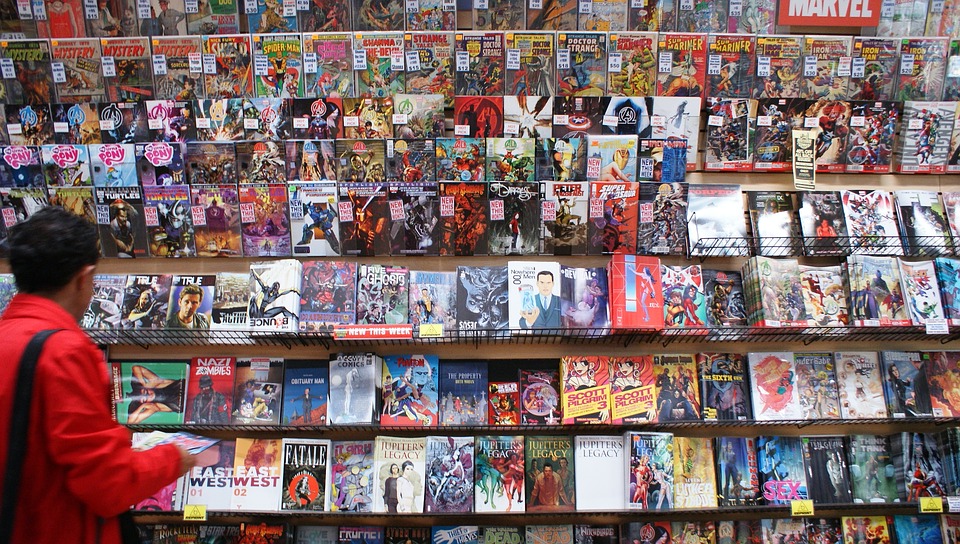Translating deep thinking into common sense
Can Its Graphic-Novel Adaptation Inspire People to Read Anthem?

By Marsha Familaro Enright
May 26, 2019
SUBSCRIBE TO SAVVY STREET (It's Free)
Ayn Rand’s fiction has been called the “gateway drug” to libertarian ideas.
Ayn Rand’s fiction has been what biographer Jennifer Burns called the “gateway drug” to libertarian ideas since she first began publishing in English with her 1938 novella, Anthem. And, as Steve Moore illustrated in his 2009 Wall Street Journal article, “Atlas Shrugged: From Fiction to Fact in 52 Years”—Rand’s predicted so much of what has transpired that she remains critical to the movement for liberty.
Anthem is the story of a thoroughly collectivized, post-apocalyptic society strongly on the lines of Plato’s Republic.
So many young people have no idea of the horrors of collectivist societies—one of the many reasons Anthem should be widely read. It’s the story of a thoroughly collectivized, post-apocalyptic society strongly on the lines of Plato’s Republic. All lives are strictly regulated by the judgment of the guardians, everyone assigned to a profession regardless of intelligence or talent, living in barracks, and coupling anonymously once a year in the City Palace of Mating with a partner also chosen by the rulers. In this society certain words are not only lost but forbidden and punishable by death.
It’s told from the point of view of a young man who’s intelligent, ambitious, inventive, and self-assertive: a recipe for disaster. But he will not be beaten and his discovery of a fundamental concept frees him.
I remember when I taught a class at Rockford College a few years ago in which the students read Anthem. One asked “Is this possible? Could this happen?” I said “It already has. In the Dark Ages, Soviet Russia, Maoist China, Communist Cambodia.”
But how to get those who are used to reading up to two hundred and forty characters and watching YouTube videos galore to read Rand’s long tomes? Even Anthem, often an introduction to Rand’s inspiring vision, is around 15,000 words, approximately a one-hour read.
Atlas Society Executive Director Jennifer Grossman cleverly turned to the graphic novel form for help. The graphic novel appeals to the young who seem to love dystopian stories, judged by the popularity of such works as The Hunger Games and Divergent series. “According to librarians surveyed … graphic novels are among the most circulated categories …” “Even at academic libraries, graphic novels are in demand. ‘Graphic novels are the most frequently requested material in our Ivy League request system,’ says Karen Green, librarian for ancient and medieval history and graphic novel selector at Columbia University.”
Grossman and illustrator Dan Parsons have produced an attractive, glossy version of Rand’s now-out-of-copyright novel. True to the original text, this version illustrates the lyricism of the original prose, as well as the language that embodies the collectivist frame of mind so well.
Parsons’ drawings bring the gruesomeness and the inspiration of the story to life.
Parsons’ drawings bring the gruesomeness and the inspiration of the story to life. The dialogue bubbles make it all the more real as the reader sees the words along with the facial expressions. Other elements punch across what life under a collectivist tyranny is like: the Nazi-ish uniforms (the story was written as the Nazis were coming to power), the all-powerful “Council” judges as anonymous hooded figures, the screaming crowd watching the terror of a dissident being burned alive, contrasting dramatically with the serenity of the victim’s face.
I especially enjoyed the depiction of delight which the hero experiences on his first day of freedom in the forest—can you imagine the oppression lifted from everything you did when you realized you didn’t have to follow others’ orders? This is something of which most young people born in the U.S. have no experiential knowledge—Real oppression.
I hope this edition can bring Rand’s great story, along with its heroism and Romantic vision, to a new generation.
I hope this edition can bring Rand’s great story, along with its heroism and Romantic vision, to a new generation, a generation used to cynicism. Our present-day culture is paradoxical. On the one hand, there’s tremendous admiration for great achievements, shown through the passion for Steve Jobs’ work, the celebration of SpaceX and Blue Horizons, and the enthusiasm for Airbnb’s offerings. On the other hand, there are the endless attacks on capitalism as an evil, greed-laden system and an obsession with “equality.” The consequence: the resurgence of socialism as an ideal, fueled by ignorance and guilt, on the part of the young, and deception on the part of the old who should know better.
The issues are the same as those in the novel. Let’s hope the republication of this book in a new format will help prevent us from falling into the trap of darkness again.








